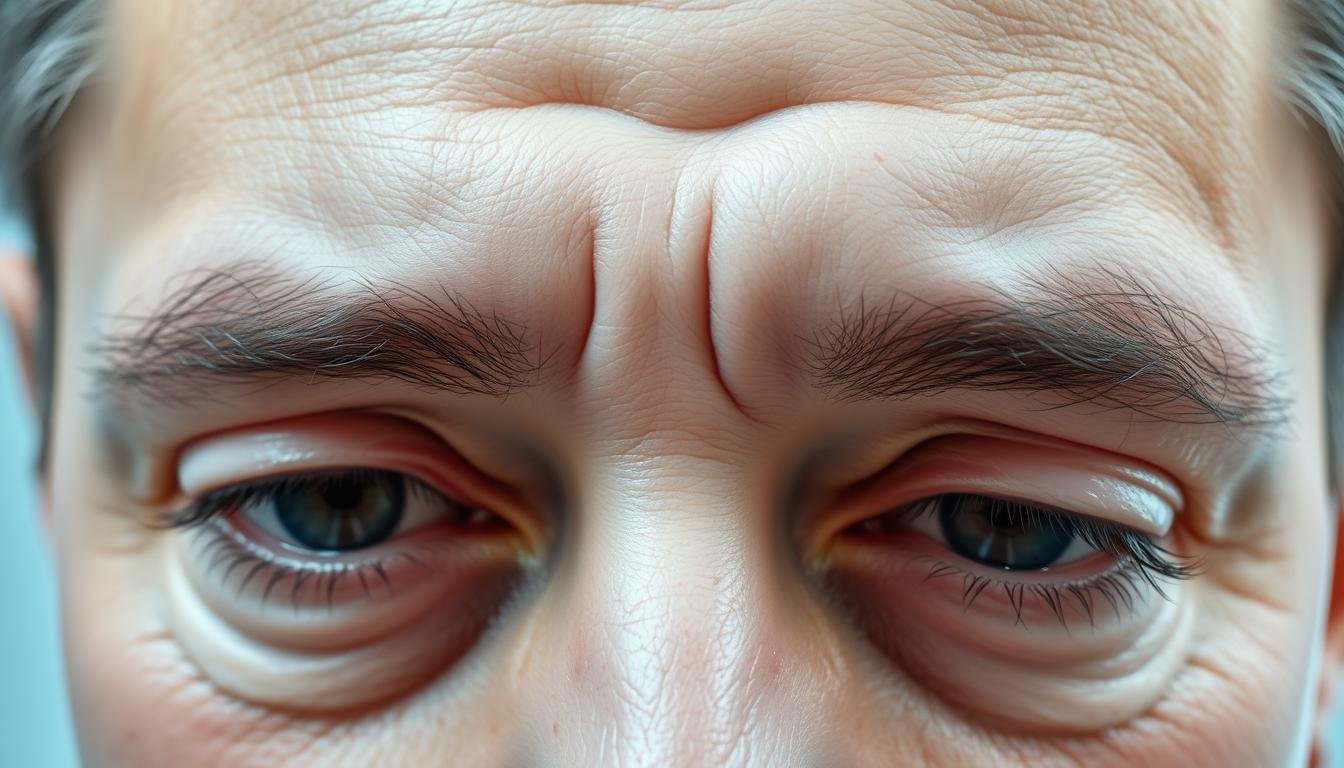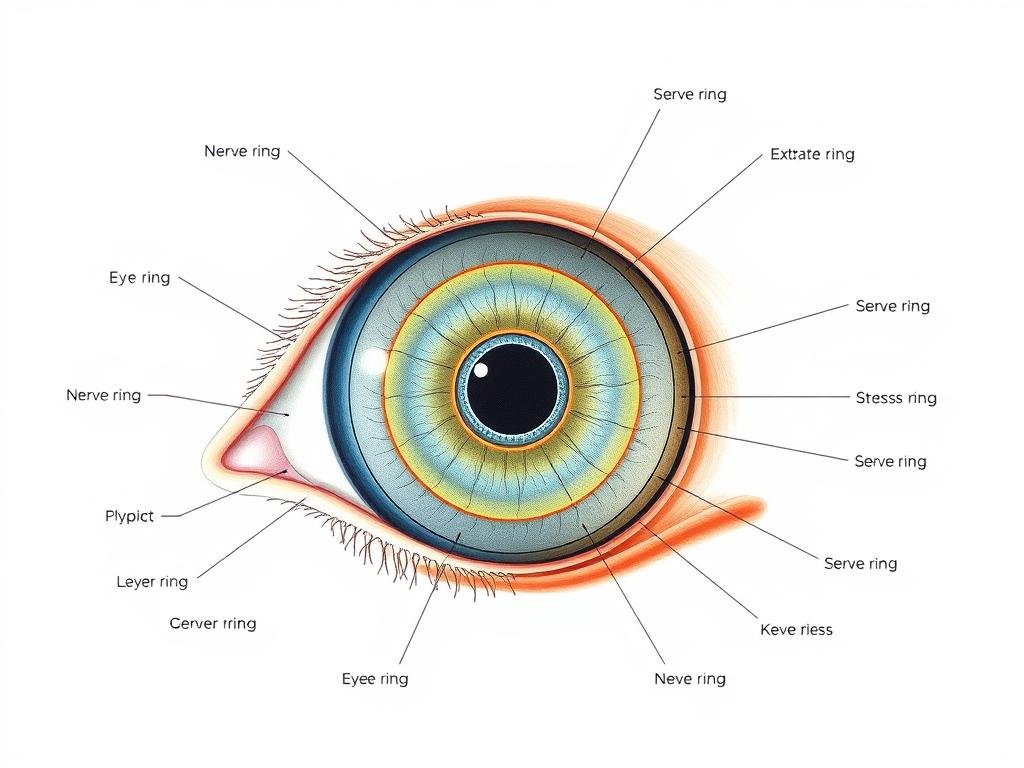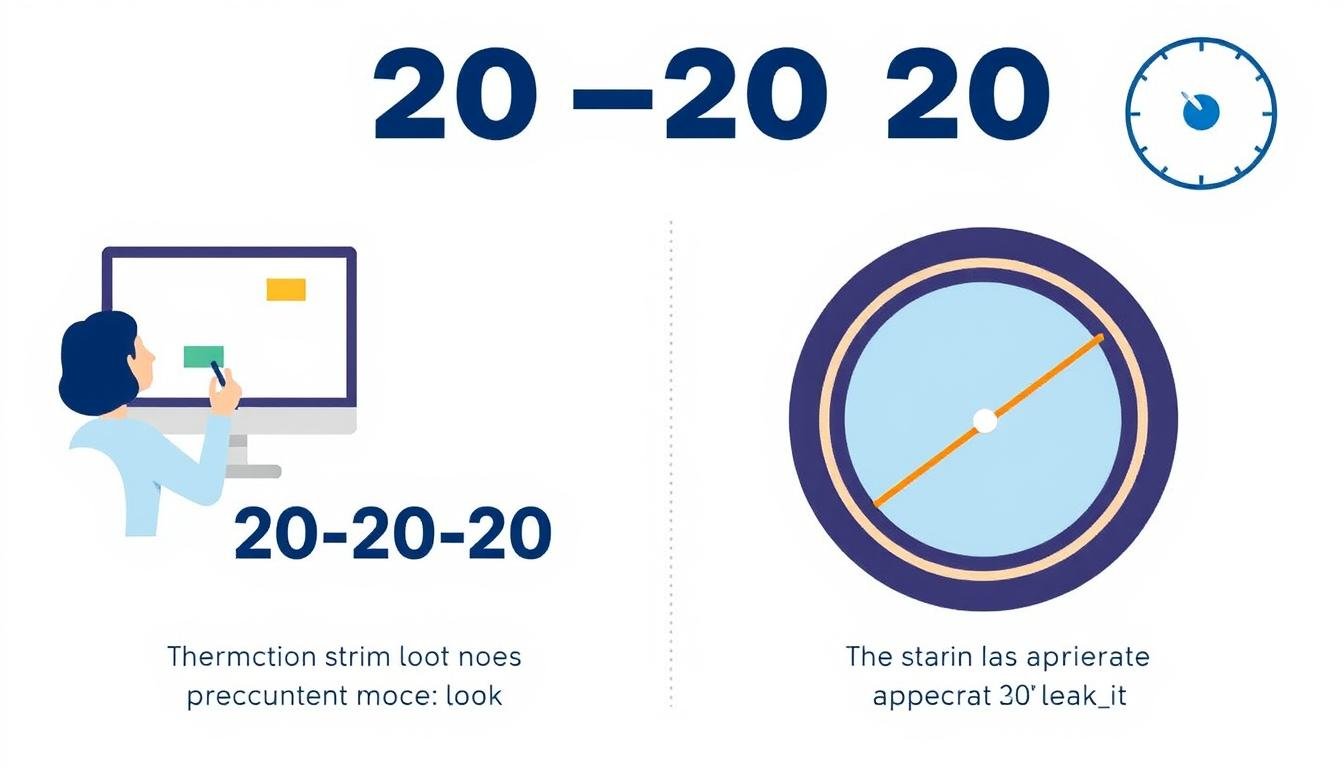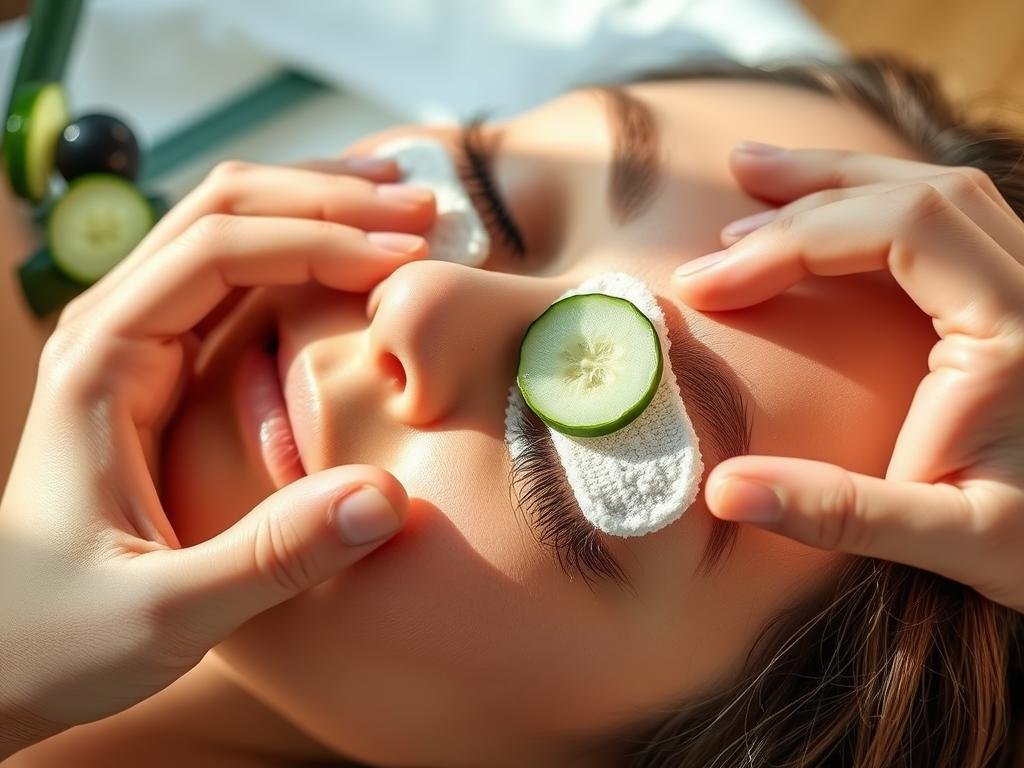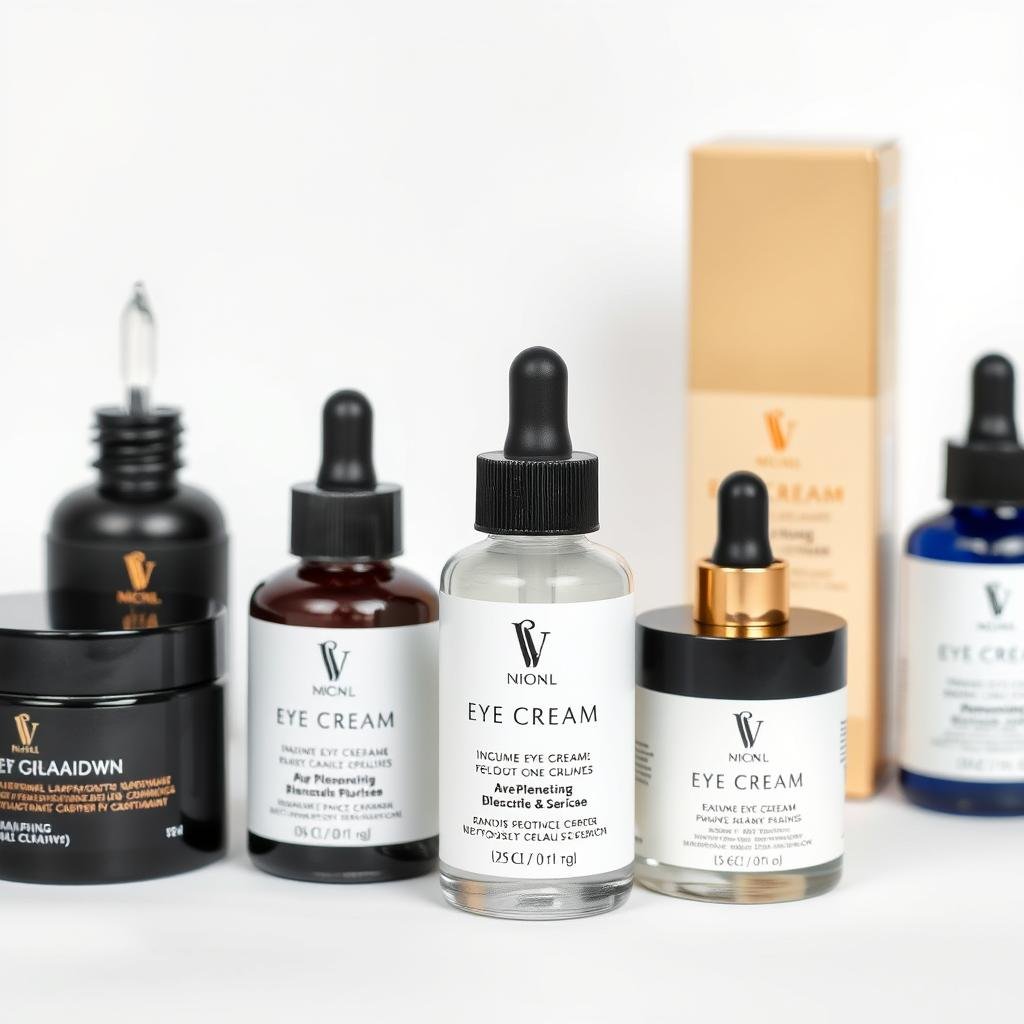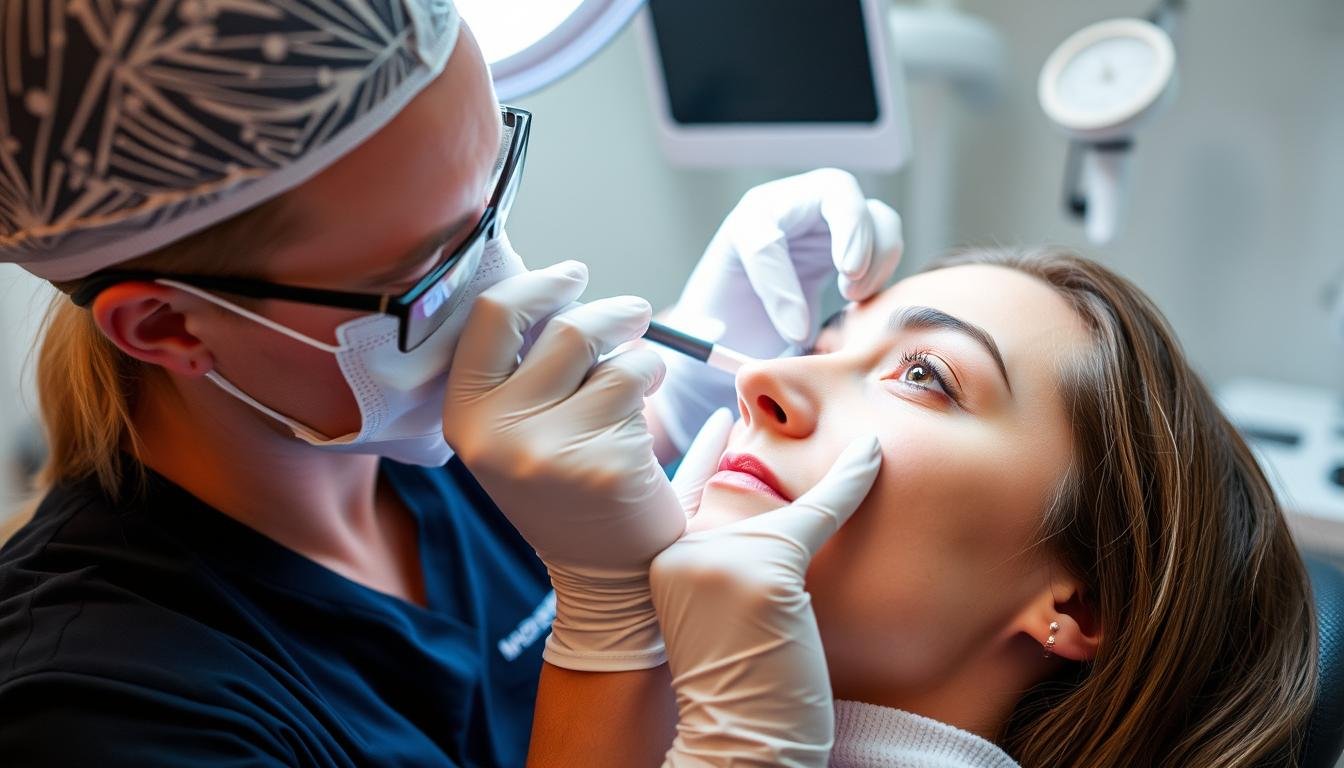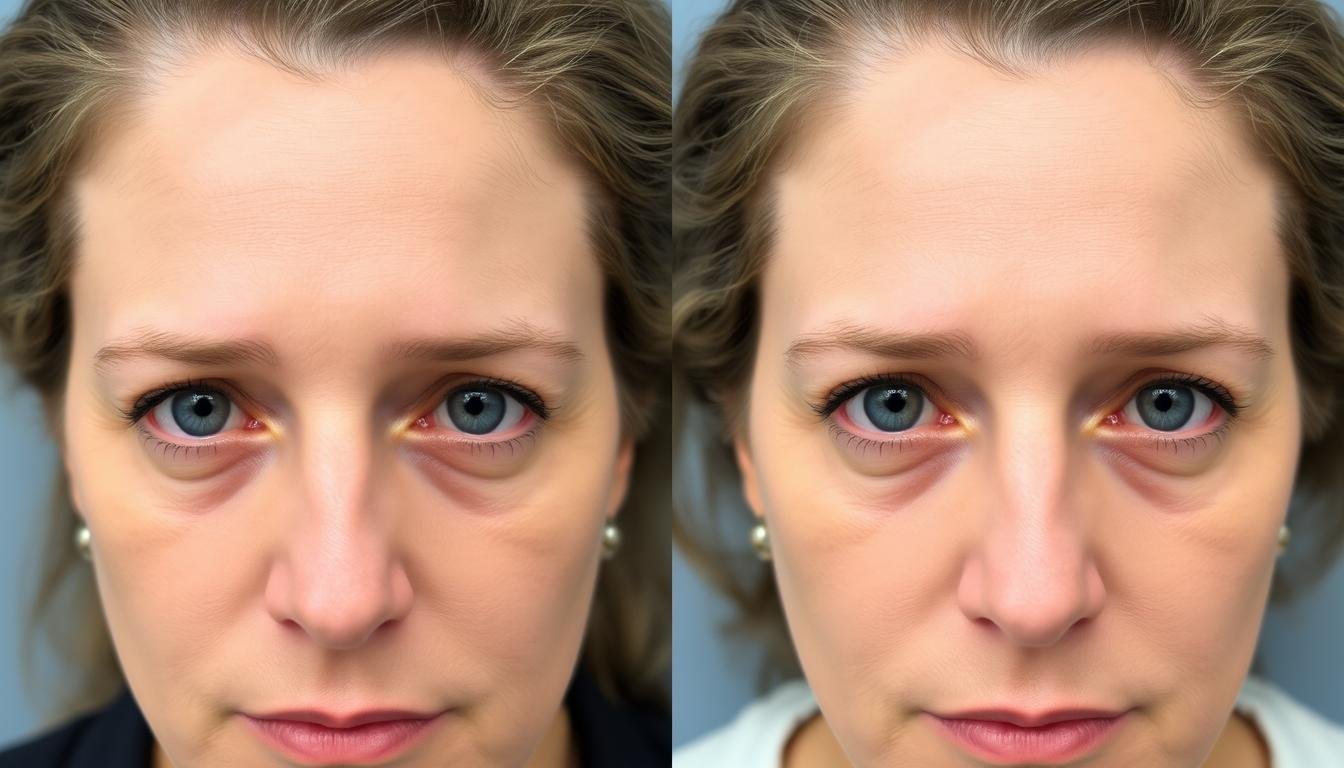Eye stress rings – those dark circles and puffiness around your eyes – are often telltale signs of our modern lifestyle. Whether caused by prolonged screen time, insufficient sleep, or other factors, these visible markers can make you look tired and aged beyond your years. This comprehensive guide explores what eye stress rings are, why they appear, and most importantly, what you can do to prevent and treat them effectively.
Eye stress rings appear as dark circles and puffiness around the eye area
What Are Eye Stress Rings?
Eye stress rings, sometimes called nerve rings in iridology, are visible signs of strain that appear around the eyes. From a conventional medical perspective, they manifest as dark circles, puffiness, and fine lines. In iridology (the study of the iris for health assessment), nerve rings or stress rings appear as circular depressions in the iris stroma that indicate degrees of nervous tension or anxiety.
Dr. Sarah Johnson, an ophthalmologist at the Advanced Eye Care Center, explains: “Eye stress rings are primarily caused by blood vessels showing through the thin skin under the eyes. When we’re tired or stressed, blood flow changes and can cause fluid to pool in this area, creating that characteristic shadowy appearance.”
5 Root Causes of Eye Stress Rings
1. Digital Eye Strain
In our screen-dominated world, digital eye strain has become a leading cause of eye stress rings. Extended periods of focusing on digital screens reduces our blink rate by up to 60%, according to research published in the Journal of Ophthalmology. This decreased blinking leads to dry eyes, increased strain on eye muscles, and eventually contributes to the formation of eye stress rings.
Protect Your Eyes From Digital Strain
Try blue light blocking glasses designed specifically to reduce digital eye strain and protect your eyes during screen time.
Shop Iridology Camera
2. Sleep Deprivation
Lack of quality sleep is directly linked to the formation of eye stress rings. During sleep, your body repairs tissues and balances fluid distribution. When you don’t get enough rest, fluid can accumulate under your eyes, creating puffiness and dark circles. A study in the Sleep Medicine journal found that even one night of poor sleep can increase the appearance of eye stress rings by 30%.
3. Dehydration
When your body is dehydrated, it attempts to retain water, which can lead to puffiness around the eyes. Simultaneously, dehydration causes the skin to become dull and thin, making blood vessels more visible and creating darker circles. The delicate skin around the eyes is particularly susceptible to these effects.
4. Allergies and Sinus Congestion
Allergic reactions cause the release of histamines in the body, which can dilate blood vessels and increase blood flow to tissues. When this happens around the eyes, it creates dark circles. Additionally, allergies often cause us to rub our eyes, further irritating the delicate skin and worsening the appearance of eye stress rings.
Dr. Michael Chen, optometrist at Vision Health Institute, notes: “Many patients don’t realize their persistent eye stress rings are actually related to untreated seasonal allergies or chronic sinus issues. Addressing these underlying conditions can significantly improve the appearance of the eye area.”
5. Nutritional Deficiencies
Deficiencies in key nutrients like iron, vitamin K, and vitamin C can contribute to the formation of eye stress rings. Iron deficiency anemia, in particular, reduces the oxygen-carrying capacity of blood, making the blood vessels appear darker through the thin skin under the eyes. A balanced diet rich in these nutrients supports healthy skin and proper circulation around the eyes.
3 Actionable Prevention Strategies
1. The 20-20-20 Rule for Digital Eye Strain
This simple but effective technique helps reduce eye strain during screen time. Every 20 minutes, look at something 20 feet away for at least 20 seconds. This practice gives your eye muscles a chance to relax and reduces the strain that contributes to eye stress rings.
Research published in the American Journal of Ophthalmology found that implementing the 20-20-20 rule reduced symptoms of digital eye strain by up to 50% among regular computer users. Setting a timer or using specialized apps can help you remember to take these important breaks.
2. Ergonomic Adjustments
Proper ergonomics can significantly reduce eye strain and prevent eye stress rings. Position your computer screen about an arm’s length away and with the top of the screen at or slightly below eye level. This positioning reduces the strain on your eye muscles and decreases dryness by allowing your eyelids to cover more of your eyes when looking at the screen.
Additionally, ensure proper lighting in your workspace. Avoid glare from windows or overhead lights on your screen, as this forces your eyes to work harder. Consider using a matte screen filter if glare is unavoidable in your environment.
3. Eye-Friendly Diet
Nutrition plays a crucial role in preventing eye stress rings. Focus on foods rich in:
- Vitamin C – Strengthens blood vessels around the eyes (citrus fruits, bell peppers, strawberries)
- Vitamin K – Reduces dark circles by improving blood coagulation (leafy greens, broccoli)
- Iron – Prevents anemia-related dark circles (spinach, lentils, lean meats)
- اوميگا 3 فٽي تيزاب – Reduce inflammation and support eye health (fatty fish, walnuts, flaxseeds)
- Water – Proper hydration prevents fluid retention around the eyes
A study in the Journal of Clinical Nutrition found that participants who followed a diet rich in these nutrients showed a 35% reduction in the appearance of eye stress rings over a 12-week period.
4 Effective Treatment Methods for Eye Stress Rings
1. Cold Compresses
Cold therapy is one of the simplest and most effective ways to reduce the appearance of eye stress rings. Cold temperatures constrict blood vessels, reducing the appearance of dark circles, and help decrease fluid retention that causes puffiness.
“A simple cold compress applied for 10 minutes in the morning can reduce eye puffiness by up to 40% by constricting blood vessels and reducing fluid accumulation,” explains Dr. Sarah Johnson, ophthalmologist.
Dr. Sarah Johnson, Ophthalmologist
For best results, try chilled cucumber slices, cold tea bags (especially green tea or chamomile), or a specialized eye mask that can be refrigerated. Apply for 10-15 minutes while lying down with your head slightly elevated.
Soothe Your Eyes
Try our cooling gel eye mask designed to reduce puffiness and dark circles associated with eye stress rings.
Iridology Iris تشخيص
2. Specialized Eye Creams
Eye creams formulated specifically for dark circles and puffiness can be effective in treating eye stress rings. Look for products containing these key ingredients:
- Caffeine – Constricts blood vessels and reduces fluid retention
- Vitamin C – Brightens skin and strengthens blood vessels
- Retinol – Thickens thin under-eye skin and improves collagen production
- Peptides – Support collagen and elastin production
- Hyaluronic acid – Hydrates and plumps thin skin
Apply eye cream gently using your ring finger (which naturally applies the least pressure) with a patting motion rather than rubbing. For maximum effectiveness, apply to clean skin and allow the product to fully absorb before applying other skincare products or makeup.
3. Professional Treatments
For persistent eye stress rings, professional treatments performed by dermatologists or ophthalmologists can provide more dramatic results:
Laser Therapy
Laser treatments can target the blood vessels that cause dark circles. Treatments like IPL (Intense Pulsed Light) therapy can reduce pigmentation and stimulate collagen production, improving the appearance of the under-eye area.
Dermal Fillers
Hyaluronic acid fillers can restore volume to hollow areas under the eyes that create shadows. This treatment is particularly effective for eye stress rings caused by volume loss rather than pigmentation.
Chemical Peels
Gentle chemical peels containing glycolic acid or lactic acid can help lighten dark pigmentation around the eyes and improve skin texture.
Microneedling
This procedure creates tiny punctures in the skin that stimulate collagen production, helping to thicken thin under-eye skin and reduce the visibility of blood vessels.
Professional Treatment Consultation
Speak with a specialist about the best professional treatments for your specific type of eye stress rings.
اکين ۾ دٻاء وجهي ٿو
4. Lifestyle Adjustments
Sometimes the most effective treatments for eye stress rings involve addressing the root causes through lifestyle changes:
- Improve sleep quality – Aim for 7-9 hours of quality sleep per night
- Stay hydrated – Drink at least 8 glasses of water daily
- Reduce salt intake – Excess sodium contributes to fluid retention
- Manage allergies – Use antihistamines or consult an allergist if allergies are contributing to your eye stress rings
- Practice stress management – Techniques like meditation, yoga, or deep breathing can reduce stress-related eye issues
Frequently Asked Questions About Eye Stress Rings
Can eye stress rings become permanent?
Eye stress rings can become more persistent over time if the underlying causes aren’t addressed. While they may appear more prominent with age as the skin naturally thins, they are rarely truly permanent. Consistent treatment and prevention strategies can significantly reduce their appearance even in long-standing cases.
Dr. Michael Chen explains, “What many people think of as ‘permanent’ eye stress rings are often just chronic conditions that haven’t been properly addressed. With the right combination of treatments targeting the specific causes, most patients see significant improvement.”
Do eye exercises help reduce eye stress rings?
Yes, specific eye exercises can help reduce eye stress rings, particularly those caused by digital eye strain. Regular eye exercises help improve blood circulation around the eyes, strengthen eye muscles, and reduce tension that contributes to the formation of eye stress rings.
Effective exercises include:
- Palming – Rub your hands together to create warmth, then gently place your palms over closed eyes for 30 seconds
- Eye rolling – Slowly roll your eyes in clockwise and counterclockwise directions
- Focus shifting – Alternate focusing on objects at different distances
- Blinking exercises – Deliberately blink completely 10-15 times to refresh tear film
A study published in the Journal of Optometry found that participants who performed these exercises for 5 minutes twice daily experienced a 28% reduction in symptoms associated with eye stress rings after four weeks.
Are eye stress rings related to serious health conditions?
While eye stress rings are typically related to lifestyle factors like sleep deprivation, dehydration, and digital eye strain, they can occasionally indicate underlying health conditions. Persistent or suddenly worsening eye stress rings might be associated with:
- Thyroid disorders
- Anemia
- Kidney or liver dysfunction
- Chronic allergies
- Cardiovascular issues
If your eye stress rings appear suddenly, are accompanied by other symptoms, or don’t improve with standard treatments, consult a healthcare professional to rule out underlying medical conditions.
How long does it take to see improvement in eye stress rings?
The timeline for improvement varies depending on the cause and treatment approach:
- Immediate relief (hours): Cold compresses, cucumber slices
- Short-term improvement (days): Adequate sleep, hydration, reduced screen time
- Medium-term results (2-4 weeks): Eye creams, dietary changes, consistent eye exercises
- Long-term resolution (1-3 months): Professional treatments, comprehensive lifestyle changes
Consistency is key—most people notice significant improvement within 4-6 weeks of implementing a comprehensive approach that addresses their specific causes of eye stress rings.
Taking Action Against Eye Stress Rings
Eye stress rings are a common concern in our modern, screen-dominated world, but they don’t have to be a permanent fixture in your life. By understanding their causes and implementing the prevention and treatment strategies outlined in this guide, you can significantly reduce their appearance and protect your eye health for the long term.
Remember that consistency is key—the most effective approach combines daily prevention practices with targeted treatments specific to your type of eye stress rings. Whether you’re dealing with digital eye strain, sleep deprivation, or other contributing factors, there are solutions available to help you achieve brighter, more refreshed-looking eyes.

Results after 4 weeks of consistent treatment for eye stress rings

